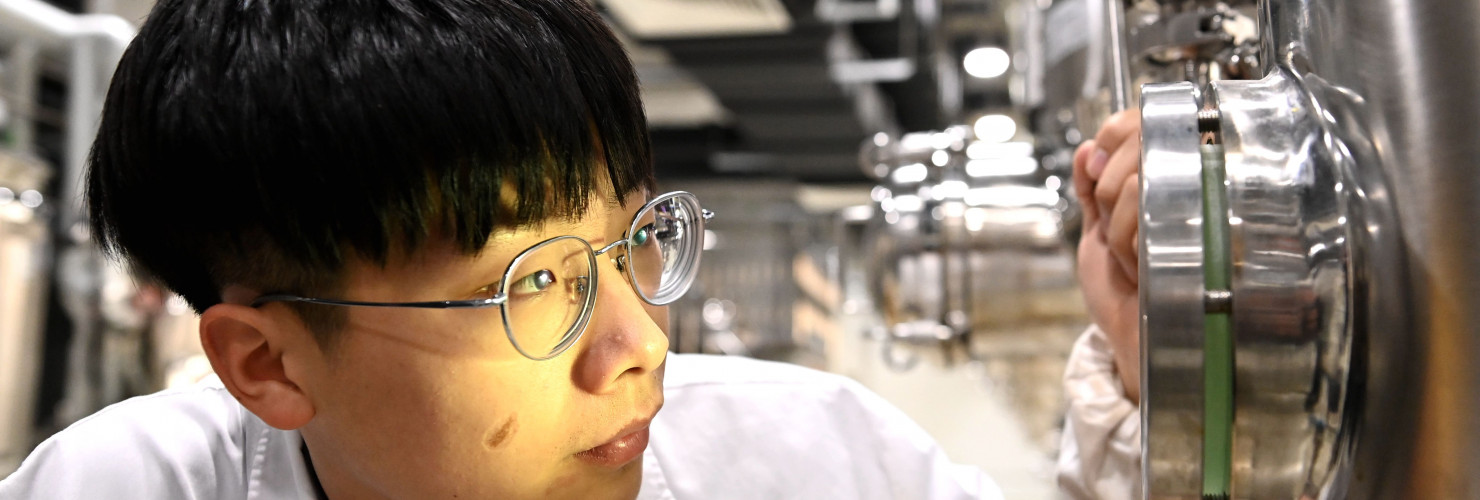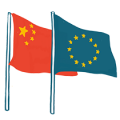

In research collaboration, drawing red lines with China isn’t easy
European governments and academic institutions still struggle to grasp and address the complexity of research collaboration with China, say Rebecca Arcesati, Francesca Ghiretti and Sylvia Schwaag Serger. They will need to carefully balance the risks and rewards.
Pressure – from government, research funders and media – is growing on European research institutions to reconsider and effectively cut ties with Chinese partners in high-tech areas. Often these demands emerge before any clear policy and/or legal framework has been established. Furthermore, they can conflict with academic freedom and the pursuit of research excellence and career development, creating friction between national security concerns and scientific enterprise. Drawing hard red lines around entire fields of science can also sacrifice opportunities.
Growing geopolitical tensions with China over its opaque innovation system make adopting the right policy challenging. European countries have taken diverse steps to protect research security and integrity. Some have drawn up guidelines for academia, others are considering screening incoming Chinese students and researchers. These measures have often come in response to evidence that the Chinese government had used scientific ties to extract technology and knowledge to modernize its military or power its surveillance apparatus. There are also concerns that Europe may lose know-how critical to its economic competitiveness.
Europe’s research collaboration with China remains strong—for now
European governments and academic institutions still struggle to grasp and address the complexity of research collaboration with China. There are important scientific, economic, societal, and strategic arguments for working with this rising technology superpower. Research collaboration between both sides has grown rapidly in the past decade. Data from the research analytics tool SciVal shows that between 2013 and 2022, co-publications increased between China and its largest European cooperation partners – the United Kingdom, Germany, France, Italy, the Netherlands, Sweden, Spain Switzerland, Denmark, and Belgium. Among these, co-publications grew the least in France (by 133 percent) and the most in Italy (by 258 percent). Germany was China’s largest European Union partner with 86,000 joint publications, followed by France (54,000), Italy (36,000), and the Netherlands (32,000).
The data suggests that recent geopolitical tensions and technological rivalry may have affected research ties between the United States and China, but not yet between China and Europe. Between 2020 and 2022, US co-publications with China declined by nearly seven percent although they continued to increase for all EU countries (except for Bulgaria and Lithuania) as well as for Norway, Switzerland, and the UK. Nevertheless, between 2013 and 2022, the US was China’s top partner, with more than 520,000 joint publications, followed by the UK with about 150,000.
A patchwork research security landscape and the limits of self-regulation
National governments and the EU have a range of tools to protect sensitive knowledge and technology from being exploited by foreign states. Some countries, like the Netherlands and Norway, have not shied away from introducing regulatory instruments, while others have left the initiative up to the scientific community. For example, due to its strong traditional opposition to constraints on academic freedom, Germany is unlikely to impose any binding regulation on universities’ international collaborations.
But the absence of regulation puts the burden of assessing and managing risks on the scientific community, which is not always equipped or prepared to consider national security concerns. Security teams at universities struggle to discourage scientists from pursuing dual-use projects with military institutions in China, or civilian schools tied to the military. Dual-use export controls do apply to scientific knowledge production in some cases, but there are loopholes.
Europe must shift from risk prevention to risk management
Binary approaches that either allow for or discourage any type of joint project are ill-suited to addressing the increased complexity of research collaboration with China, because they seek to ignore or eradicate risks, rather than managing them. They may lead researchers and institutions to shy away from interaction with China across the board.
But some risky collaborations – for example, in certain sensitive technology areas like artificial intelligence or biotechnologies – may also carry high potential rewards. These include insights into China’s increasing research and technology advances in these areas. Working with China could also help tackle global challenges, like the climate crisis or diseases, and advance critical scientific and technological development of relevance to Europe’s future competitiveness and prosperity.
Take an EU-funded project aimed at measuring cancer cells through micro/nano robotics – a project that could contribute to healthcare advances benefitting people around the world. Had the Harbin Institute of Technology and Changchun University of Science and Technology, both civilian institutions conducting prominent defense research work, been excluded, would the gains have outweighed the losses? The question is worth asking. Europe needs approaches that identify and selectively enable certain high-risk collaborations, establishing strict monitoring for such projects.
Getting screening right
Drawing red lines is productive only when done in a highly calibrated manner. Across the Atlantic, a law enforcement campaign by the Department of Justice and the FBI against industrial and academic espionage has alienated many Chinese scientists. European societies should not think they are immune to the dangers of a radical, securitized approach to cross-border research collaboration, such as discrimination against Chinese nationals working in Europe.
The UK government has been denying more clearances for incoming Chinese scientists and students on national security grounds, while the Dutch government is considering screening students from certain countries, including China, who wish to research sensitive technology areas in the Netherlands. Meanwhile, anecdotal evidence and conversations with European universities indicate that some have quietly stopped accepting researchers from certain Chinese universities, such as the Seven Sons of National Defense, or PhD students with Chinese Scholarship Council scholarships, irrespective of the discipline.
Screening measures are necessary, but they should be designed in such a way to ensure proportionality. Many Chinese universities simultaneously carry out defense and civilian research, so blanket bans are not advisable. Ideally, the higher education sector, in collaboration with government agencies, security services, technologists, and China experts, should have the information and structures to evaluate projects and their Chinese partners one-by-one. This would ensure that the research does not undermine ethical principles or national security.
The way forward
A strategic approach to collaboration with China aligns with the “de-risking” approach set out in the European Commission’s proposal for a European Economic Security Strategy. The proposal also calls for strengthening the EU’s research security toolbox. The German government’s first China strategy highlights opportunities, such as working with China in areas where it excels and retaining Chinese talent in Germany. But Berlin is also concerned about Beijing’s exploitation of basic research for military-civil fusion and wants to raise scientists’ awareness of the national security and human rights risks.
Implementing these ideas will require both ends of the spectrum to shoulder some responsibility. Governments must accept that collaboration with China cannot be risk-free, while scientists must accept that research collaborations do not happen in a vacuum, warranting proportionate government intervention.
The openness of the European scientific community means that uneven adoption of policies can hinder their efficacy by simply rerouting risks—or opportunities—to another country and its research institutions. Effective risk-management in research collaboration with China will require coordination, not only among EU countries but also with the UK and other allies.



